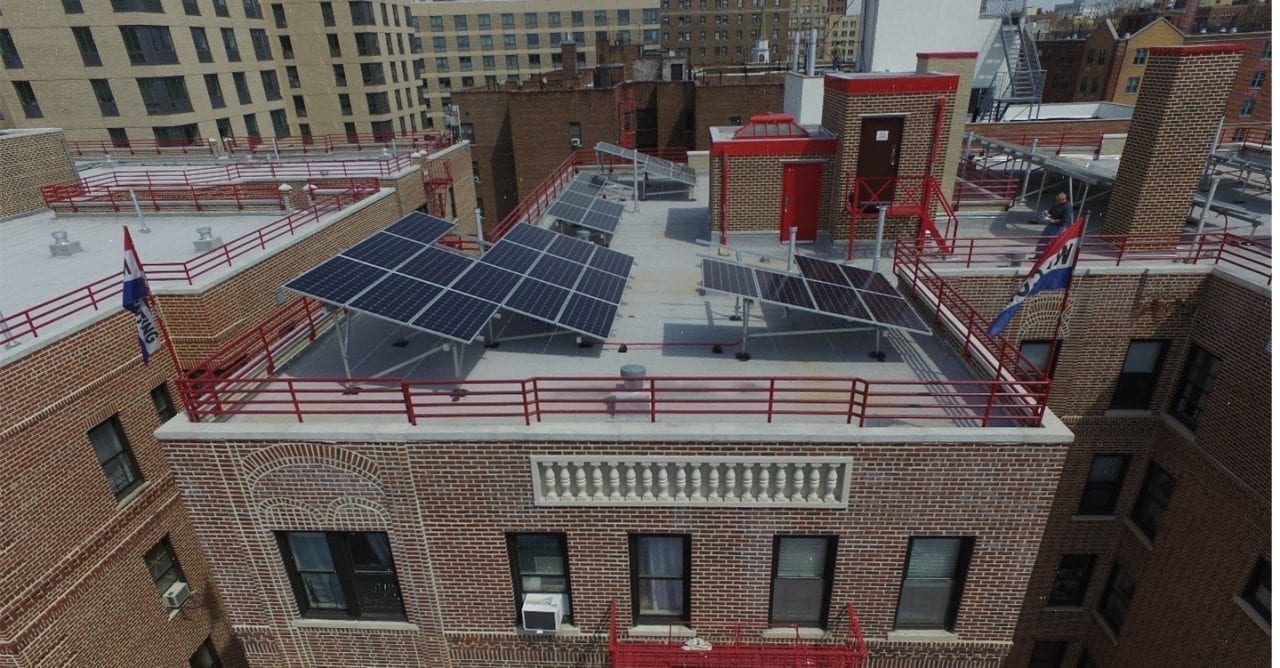The POWER Interview: How Solar Can Solve the C&I Power Puzzle
Credit to Author: Darrell Proctor| Date: Sat, 28 May 2022 14:16:00 +0000

Commercial and industrial (C&I) enterprises rely on their power supply. Many facilities, such as hospitals, federal institutions, and military bases—those considered mission critical—have long been at the forefront of finding solutions to keep their lights on.
In today’s world, the need for reliable and resilient power is critical for a wide range of industries. Uninterrupted power is essential, not only for operations but also for safety. Power outages can bring economic disaster for businesses that don’t have a power system that can ensure the lights don’t go out.
That’s why more and more C&I enterprises are installing their own power generation systems, to keep their business up and running. Many are embracing renewable energy solutions as part of their sustainability efforts, recognizing the importance of decarbonization as they design their own onsite generation, or as they purchase power from others—be it solar power, wind power, or another distributed energy resource.
Kirk Edelman, chief commercial officer with New York City-based Safari Energy, a solar energy company, answered questions from POWER about the solar industry and how it fits within the growing need for commercial and industrial facilities to produce their own power to ensure a reliable and resilient supply of electricity.
POWER: What are some of the new technologies that could be deployed in the coming years in commercial and industrial settings for power generation?
Edelman: We see C&I solar power continuing to grow in the coming years. While solar is no longer a “new” technology, we’ve seen that it is still a relatively unfamiliar concept for many in C&I real estate. This means that while the general idea of solar is widely accepted, new customers often need to be educated about financing structures and the impact on their sustainability objectives.

One “new” aspect of solar is that in many states, including California, New Jersey and Maryland, legislation is being passed for certain new construction to be “solar-ready.” These types of mandates speak to the widespread adoption and acceptance of solar technology.
Nonetheless, there are also relatively new solar-adjacent technologies also increasingly being deployed. Battery energy storage systems, for example, are being added to solar arrays to extend the impact of the power they generate, as well as to provide financial, ESG, and resiliency benefits. According to the Energy Storage Association (now part of the American Clean Power Association), energy storage currently makes up only 2% of U.S. generation capacity but is expected to reach 4.4 GW in annual deployments by 2024.
In addition to hybrid solar + storage technology, we expect to see more electric vehicle (EV) charging stations deployed in commercial and industrial projects. EV charging stations are forecast to grow significantly due to increasing demand at shopping centers, logistics parking bays, and public parking lots. Federal tax credits and declining costs of electric vehicles will also drive the adoption of this technology.
POWER: What are the most important issues that C&I customers (businesses, campuses, etc.) should consider before embarking on installation of a power generation system (size, location, permitting, etc.)?
Edelman: Prior to considering renewable energy, it is important for C&I customers to understand their strategic objectives. Asking questions like, “is my business able to access low-cost capital?”, or “what is my company’s tax appetite?”, will help to determine which type of financing structure will best fit that customer’s unique needs. Asking these questions early and choosing the right development partner to help navigate the process, is crucial to the execution of a project.
However, financing and development is only one piece of the puzzle. Evaluating the costs and benefits of a system is another important element that C&I customers must consider. The success of any renewable energy project can vary significantly depending on its size and placement, availability of incentives, electricity rate, tenant relationships, and other factors.
To better understand the benefits of a potential project and to evaluate large portfolios quickly, solar developers like Safari Energy often use artificial intelligence, machine learning, and data analytics to evaluate key metrics of real estate portfolios so that C&I customers can make the most educated investment decision possible.
POWER: How important, from a financial standpoint, is the ability for a C&I customer to generate their own electricity?
Edelman: Generating on-site renewable energy can provide a variety of financial and operational benefits that can also be tailored to specific objectives. If a business has the capital needed to own a solar system, then the fuel and the electricity generated have no incremental cost. Furthermore, a solar project will likely benefit from the Federal Investment Tax Credit (ITC), which is a significant incentive. This can benefit businesses with a tax appetite.
With solar, C&I customers can also lock in low and predictable electricity rates for extended periods of time through power purchase agreements (PPAs). Businesses that prefer not to own their own systems will often pursue PPAs for a discount to utility rates, which can fluctuate and increase over time.
It is important to note that financial incentives are not the only benefits for C&I customers who invest in solar. ESG (environmental, social, and governance) goals are often a focus for C&I customers due to increasing pressure from investors and often those of their supply chains, which also have significant carbon footprints.
POWER: What do you think is the greatest factor (reliability, resiliency, energy costs, etc.) for a C&I customer when it comes to a power system? Is ESG a major consideration? Decarbonization?
Edelman: ESG factors have increasingly driven sustainable action by companies in recent years. We anticipate the trend will continue, as the U.S. Securities and Exchange Commission has announced a proposed standard for ESG reporting for publicly traded companies in the U.S. This reflects the importance that investors and stakeholders are placing on environmental stewardship and carbon-intensive businesses are particularly being targeted.
Solar projects address the “E” in ESG. Solar is a good ESG solution because it’s straightforward, cost-effective, and immediately impactful. Other ESG solutions can be more complicated, requiring behavior change, or long-term and difficult-to-measure outcomes. Once a solar system is installed, the benefits accrue the moment it is switched on.
C&I customers often favor solar for their electricity needs because it can be a flexible solution. For example, while certain industrial facilities might prioritize power reliability for their processes, retail customers might be more interested in demand charge reduction. Regardless of the sector, solar can be a solution in many different areas.
POWER: What other factors should be considered for C&I power systems?
Edelman: It is important to consider all the factors of a power system, and not just the primary equipment. Many people just focus on the most visible aspects that make up a system – like the panels in a solar project, or the battery in an energy storage project. However, a project can suffer due to factors beyond the physical components.
The use of technology like artificial intelligence and data analytics can also benefit the design of a solar project such as in the way that a system is sized, located, designed, built, interconnected, or even financed. Having a strategic partner with the ability to evaluate a C&I customer’s priorities and streamline the process by using bespoke technology will provide significant benefits.
—Darrell Proctor is a senior associate editor for POWER (@POWERmagazine).
The post The POWER Interview: How Solar Can Solve the C&I Power Puzzle appeared first on POWER Magazine.